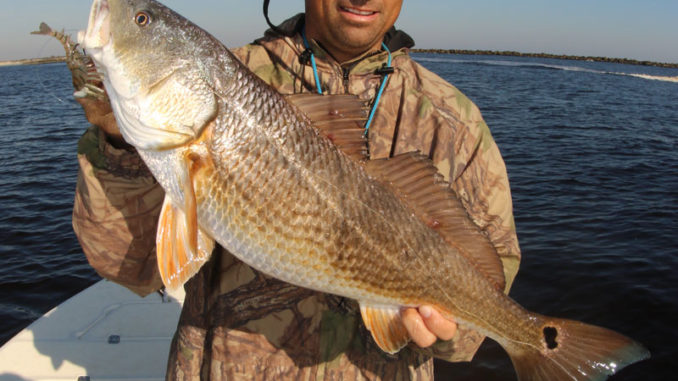
Jetties hold heat and fish during the winter
This time of year, many saltwater anglers spend their free time catching up on household chores, doing annual maintenance on their boats and fishing gear or watching fishing shows, longing for a break in the weather so they can get out on the water, hoping to feel a tug on their line.
Throughout the Carolinas, the good news is that those days do occur in February, almost every year. And it’s not just anglers looking forward to the days that hint at winter giving way to spring. Fish get anxious, too. They’re ready to feed more than they have for a few months, and they’re ready to feel the warmth of the sun just as we are.
Along our coasts, one of the best places to do that is around rock jetties. These giant formations provide a source of warmth that lasts longer than the few hours when the sun peeks out on nice days. The rocks warm up and transfer heat into the surrounding waters, and that creates activity among everything from crustaceans to the fish that eat them — and the fish that eat those fish.
Redfish hang around these structures, but they aren’t the only species to do so. Not all fish head offshore to warmer water; plenty winter close to shore.
“There are always fish at jetties, and two fish that I catch all year round are redfish and sheepshead,” said Bruce Geddings, who travels the coasts of both Carolinas as a sales rep for a major shoe manufacturer, fishing when he can. “In February, I usually happen across a few seatrout; I normally don’t catch many of them in December and January. We have some brutally cold days in February, but we have some nice days too, and on those nice days, the fish are just as active as anglers who can’t wait to get on the water to catch them.”
Geddings doesn’t mind hauling his boat along on business trips, but he often leaves it at home this time of year, opting to fish the jetties from the beaches.
“Fishing from shore, I’ll cast spoons or MirrOlures close and parallel to the jetty, then work them back in. It’s magical on some days,” he said. “But on really nice days, I’m usually offered a trip by someone in the area I’m working. I’ve made plenty of friends over the years, and I’ve had some luck convincing them that you don’t have to wait until March to catch some quality fish.
“I like to anchor a good cast away from the jetty and put a Carolina rig with any kind of live or cut bait on the bottom right behind the boat, as close to the jetty as I can cast it. I put another bottom rig to the downcurrent side of the boat at about a 30-degree angle. For my third rod, I cast a plastic shrimp or cut bait under a popping cork at a 30-degree angle to the upcurrent side of the boat.”
This gives Geddings two baits that stay on the bottom and one bait — the one under the cork — that floats parallel to the jetty as it moves with the tide. He likes the cork to really hug the structure of the jetty.
“You can catch any of those fish on any one of those rigs — on some days, you’ll catch far more of one species than the others — but I am almost always surprised at how many trout and sheepshead I catch on the popping-cork rig,” he said. “The trick is to not be afraid to get hung in the rocks. You want to fish it in a manner that has you thinking you’re going to get hung up. If you feel like you’re safe from getting hung in the rocks, then you aren’t putting the rig close enough to the jetty.
“Those trout and sheepshead hide in any nook and cranny they find in those rocks, and they would much rather a bait come right past them than have to swim out to find it.”




Be the first to comment